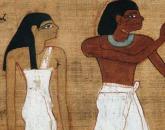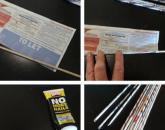Knitting patterns for pregnant women. Cozy knitted noodle dress for pregnant women: knitting algorithm Knitted patterns for pregnant women with knitting needles with description
- head circumference if a high collar is expected;
- neck circumference, desired neck volume;
- shoulder width;
- armhole height;
- distance for decorating the bottom of the sleeve, armpit width or hem;
- breast volume;
- sprout, which can be calculated using the formula 0.14 * neck circumference;
- hip volume;
- sleeve length;
- product length.
Even the most fragile figure will need at least 500 grams of yarn, which is more than 100 m in one skein.
It is better to have one more skein in stock, since the elastic pattern requires quite a lot of yarn.
You will also need:
- circular knitting needles suitable for the type of yarn chosen. It’s best to have two pairs – different in numbers, for example, No. 3 and 4, No. 2 and 3. The number of knitting needles should differ by one;
- knitting needles or thick threads for transferring inactive loops that will be knitted later (sleeves);
- knitting markers;
- hook for casting on additional loops.
Stage 1: collar and sprout
The dress is knitted using the Susie Myers method - continuous knitting from top to bottom, without any seams. There is an imitation of the set-in seam of the sleeve.
On circular needles with a lower number, cast on the number of stitches that corresponds to the circumference of your head. For a head circumference of 56 cm, it will be enough to cast on 100 loops. Moreover, this volume is suitable for slightly larger parameters.
Start knitting a collar of the required length.
Knit with an elastic pattern, for example, 2x2.
The elastic pattern consists of alternating knit and purl stitches. The 1 by 1 rib is knitted as follows: First the knit stitch is knitted, then the purl stitch, the knit stitch again and the purl stitch again. And so on until the end of the row. The 2 by 2 elastic band differs in that first two knit stitches are knitted, and then two purl loops. And so on until the end of the row.
If you decided to knit a dress without, then cast on the number of loops that corresponds to the volume of the neck. Skip the step of knitting the collar.
When the collar is knitted, divide the loops into 4 parts - two for the shoulders, one for the back and front. So, if initially 100 loops were taken, then the division can be made like this - two loops per shoulder line, 48 per back and front.
Please note that the sprout will also be untied later. And in order to place it on the main knitting needle, which becomes larger by one number, you will need to transfer several front loops (two on each side will be enough), shoulder loops and all back loops. In our example, 56 loops will be taken.
Continue knitting the elastic band. When you reach the shoulder line, make an increase on each side of the line. To make the fabric more dense, draw loops from a broach. Then continue knitting and make similar increases on the second shoulder. At the end of the row, intercept the outer loop from the extra needle, but do not knit it.
You can simplify your task a little and take two loops instead of one. Then the transition will be noticeable on the canvas, but there will be no chance of straying from the drawing.
In the example under consideration, the first row diagram will be like this: edge loop, purl loop, increase loop from the broach is knitted, two knit stitches on the first shoulder line, knit stitch increase from the broach, 48 loops with a 2x2 rib pattern (starting with the purls), knit increase loop, shoulder line - two knit stitches, again a front loop increases, two purl stitches, and a loop from the back rises onto the knitting needle.
The second row begins with a raised loop. It becomes edged. Next, two knit stitches and one purl stitch are cast on (there was a turn inside out, so the knit stitches became purl and vice versa); the increase loop from the broach is knitted purlwise, two purl loops of the shoulder line, then the back, 4 purl ones, including two increase loops, two knit stitches; one loop is lifted from a free knitting needle, but is not knitted.
The third and subsequent rows are knitted by analogy. The raised loop becomes an edge loop. Increases are made above and below the shoulder line. In rows 3, 4, 7, 8, these increases will be knitted with purl and knit stitches. In rows 5, 6, 9, 10 - knit and purl. The row ends by lifting a loop from an adjacent needle. Knitting goes on like this until the sprout is knitted.
Stage 2: shoulders, armhole design
When the sprout is knitted, transfer the front stitches to the main needle. Just continue knitting the pattern.
Next, divide, marking with markers, all the loops into 4 parts: shoulders, front and back. Start making the shoulders by stepping back 4 stitches from the shoulder line. Increases on the shoulders will be made through the row using the same broaches.
Having knitted the front, the thread will be in the place where the last grip was made to form the sprout. Continue knitting according to the pattern to the shoulder, transfer the marker to the main needle and increase with a knit stitch. Make a shoulder, add another knit stitch and transfer the marker to the main needle. Knit further along the pattern in front and make increases on the second shoulder in the same way.
Knit the next row, like all the other even rows, according to the pattern of the product without any increases.
In the third row of the “shoulder seam” design, first transfer the marker to the main needle, then make 4 knit stitches (one of them increases after the marker), 2 purl stitches, 2 knit stitches, 2 purl stitches and again 4 knit stitches (the last stitch increase before the marker). Transfer the second marker to the knitting needle and continue knitting to the next shoulder, which you design in the same way.
When increases will be added in all odd rows: first remove the first marker, increase, then knit according to the shoulder pattern, before the second marker a new loop is formed from the broach and the second marker is transferred. That is, the increases will not go along the line, but along the edge of the shoulder seam. In rows 5, 7, 13, 15 there will be increases with purl loops; in rows 9, 11, 17, 19 - knit again.
Continue knitting until you reach a length that matches the height of the armhole. After this, remove the shoulder loops onto additional knitting needles or threads. This will be the base for the sleeves.
The back and front should be on different knitting needles, since between them you still need to get a certain number of loops, the width of the armpit.
For the back and front, knit 3-6 rows with increases at the beginning and end of the row, and then pick up the missing number of loops and join the knitting into a single fabric. This will create a smoother curved armhole line.
At this stage, you can create additional rotary rows so that the product fits better in the chest area. But it’s worth doing shortened rows only when there is quite an impressive volume in this area.
After combining the halves, knit down the pattern of the product until required. If necessary, make increases in the hip area. There is no need to make reductions at the waist, because the dress was originally intended for a lady in a special position. But if desired, they can be made, just like additional narrowing from below.
Stage 3: closing the loops and making the sleeves
Close the loops using an elastic method using the Jenny method. Closing occurs during the knitting process. For a 2*2 elastic band, it is formatted as follows:
- The edge is removed onto the main knitting needle.
- Before the next loop, a yarn over, the so-called collar, is made. The working thread should be in front if this stitch is a knit stitch, and in the back if it is a purl stitch.
- The next loop is knitted according to the pattern of the product.
- The collar is draped over the knitted loop, and then the previous loop.
- Further, if the next loop is the same as the previous one, then it is knitted without any yarn overs, and the previous loop is thrown over it. If the loop is different, then 2-4 steps are repeated.
In the elastic closure according to the Jenny method, the following rule is followed: the collars are made before the first loop of the group of the same name. If there are two or three purl stitches ahead, then the collar is made only on the first purl stitch. But when it is necessary for the fabric to be “super elastic”, collars are made in each loop.
When the bottom is finished, you can move on to the sleeves. Transfer the postponed loops to the main knitting needle and pick up the required number of loops from below. Additional loops can be made immediately, but then there will be no comfortable fit. It is better to add loops gradually, pulling out one loop on each side.
The loops set aside for . Knit them according to the pattern of the product. When you reach the edge, pull a loop out of the track and place it on the main needle. There is no need to knit it. It will become the edge of the next row. Start the next row from the edge and knit according to the pattern to the edge, where, by analogy, pull out a new loop. There is also no need to knit it. Continue knitting until there is a small gap left in the armhole, about 6-8 stitches. You just need to pick them up, shaping them along the bottom, and close the knitting. Knit the sleeve in the round to the required length. If desired, starting from elbow level, you can decrease one or two stitches every 10-15 rows. Close the sleeve also in an elastic way.
(No ratings yet)
Knitted items have been around for many thousands of years, and judging by the undying popularity of these products, it won’t be for a long, long time. What can best emphasize individuality and create your own unique image, show style, than things created with your own hands in accordance with personal desires and taste. In addition, knitting is known to calm the nerves and bring a lot of pleasure.
Regarding the advisability of knitting by pregnant women, there are many conflicting opinions, disputes, and arguments in favor of both. Many frightening superstitions have been created around this activity, according to which a pregnant woman should never touch knitting needles or threads. This is possibly due to those times when women were mainly engaged in needlework at home - spinning, knitting, while pregnant. At the same time, births were performed by midwives, who often had little experience, and when a baby was born with an entwined umbilical cord, in many cases there were serious complications. And they blamed all the troubles on the very loop that is created when knitting.
Modern medicine, of course, has proven that the loops have nothing to do with it. And if you strictly follow the signs and lie on the sofa for days, then there is a chance that you will encounter all the terrible tales about the intrauterine development of a child and without any knitting. Therefore, if a woman wants to please herself or her future baby with knitted things, you can safely get to work, doing knitting in addition to walking and ordinary household chores. Moreover, there is usually plenty of time for this process during pregnancy.
Your wardrobe undergoes changes - your breasts increase, your hips and stomach, respectively, too - old clothes can become uncomfortable for a woman. Wrap models with various ties are very good at this time, emphasizing the advantages and hiding the flaws of a pregnant woman’s figure. Very successful clothing models are in the so-called Greek style - under the belt immediately under the bodice. From the bodice, these clothes have a loose silhouette, which makes it possible to wear them after pregnancy.
But some women don’t see the point in knitting loose clothes for several months in order to wear them for several months later. On the other hand, the problem of weight gained during pregnancy is not always solved immediately after childbirth; the breasts remain plump for a long time, and other forms sometimes remain fairly rounded for several years. Therefore, the blouses and cardigans you once knitted will be very useful! Wraparound models are very comfortable for breastfeeding women. A knitted poncho can be worn anywhere and in any condition. As an option, you can create a tunic with a yoke or sweaters knitted using the “rays” technique.
If you still don’t have the inclination to knit serious things, you can stop at smaller-scale products. Hats and scarves, tops, short vests.
It is also very important to knit for a baby - it can be booties, socks and various vests, overalls and hats, and many other interesting things. Some tricks will allow things to last as long as possible - after all, little children grow so quickly. For example, knit pants and overalls with suspenders, blouses and hats with cuffs. Many expectant mothers are so passionate about the process that they knit everything, even blankets. Your baby will not yet appreciate your skills and achievements in the field of knitting, but your baby will undoubtedly feel the care and warmth of your hands, which will store the clothes you knit. Knitting for children is an activity that dates back many centuries, because a children’s knitted shoe that is more than four thousand years old was discovered in Egypt!
Knitting patterns can be found in specialized printed publications, as well as on the Internet, where there are a lot of patterns and descriptions of patterns. On many forums, young mothers share their experiences and post photographs and detailed descriptions of the masterpieces they created with their own hands. Don’t be afraid to express yourself in knitting, you will find a lot of positive aspects in it, awaken your imagination, and the result of your work will definitely please you!
This page is found by queries:
- knitting for pregnant women
- knitting for pregnant women with description
- knitting for pregnant women with knitting needles with description
- knitting for pregnant women
"GRAY JACKET"
Dimensions of the finished product: waist circumference 80(85)92(99)106 cm, full length 56(58)60(62)64 cm, sleeve length 36(37)38(39)40 cm. Back and shelves: dial on circular knitting needles NS 3 272(290)308(326)344 sts, knit 2 rows in straight and reverse rows. loops. Attention! Knit the edge loops - the first and last loops - in each row. Then knit 10 cm with a pattern according to the pattern. Next, knit faces. satin stitch (knit rows - knit stitches, purl rows - purl stitches). Using a contrasting thread, mark: 68(72)77(81)86 sts for the front and 136(146)154(164)172 sts for the back. Cast off 1 stitch on both sides of the marks every 3 cm for a total of 7(7)7(8)8 times = 244(262)280(294)312 stitches. For a work length of 25(26)28(29) 30 cm in the next row evenly close 28(34)32(30)32 sts = 216(228)248(264)284 sts. Next, knit 5cm with an elastic band 2x2(1 edge stitch, * 2 knit stitches, 2 purl p.*, repeat *-*, at the end of the row 2 p., 1 p.). After this, continue knitting faces. satin stitch If the work length is 35(36)37(38)39 cm, close the armhole on the sides with 8 stitches (4 stitches on both sides of the mark). After this, remove the loops on the extra. knitting needle and set aside. Sleeves: cast on 90(90)108(108)108 p., knit in a 10 cm circle with a pattern according to the pattern. Next, knit faces. satin stitch, while in the 1st row of satin stitch, evenly reduce the number of loops to 70 (76) 80 (86) 86 sts. The first loop of the row serves as a mark, knit it in each row with a purl loop. Then cast on an additional 1 stitch on both sides of the mark approximately every 3(3)3.5(3.5)3.5 cm for a total of 7(8)8(8)8 times = 84(92)96( 102-102 p. If the work length is 36(37)38(39)40 cm, close the middle 8 p. from the bottom of the sleeve. Knit the other sleeve in the same way. Raglan: slip all stitches onto circular needles = 352(380)408(436)456 sts, knit 3 rows. satin stitch Use a contrasting thread to mark the joints of the work pieces. Begin casting off stitches to create the neckline and raglan. To do this, knit 3 stitches from the mark, then remove 1 stitch without knitting, knit 1 stitch. p. and pull the removed loop through it. After this, knit 2 knits. sts and knit 2 stitches together. Close the loops at each tag in this way. Continue knitting faces. stitch in straight rows, covering the raglan stitches in every 2nd row (on the front side). After 5 stitches are closed for the raglan bevel, proceed to knitting the V-shaped neckline. To do this, knit 2 stitches together in every 2nd row (on the front side) on both sides of the neckline until the raglan and neckline are connected. Then cast off 2 stitches at the beginning of each row. and continue knitting the raglan bevel near the remaining marks until the length of the work reaches 56 (58) 60 (62) 64 cm. Cast off the remaining loops. Tying: crochet the edges of the shelves and the neckline as follows: on the front side, knit 1 row of st. b/n, 1 tbsp. in each purl loop, while skipping every 4th stitch (the number of loops should be a multiple of 4 + 1 stitch). Cut the thread. Knit from the front side of the fan: *1 tbsp. s/n in the 1st art. bn, skip 1 tbsp. b/n, 6 tbsp. s/n in next Art. b/n, skip 1 tbsp. b/n*, repeat *-* throughout the row
Does pregnancy force you to spend almost all your time within four walls? Then you can take up handicrafts and spend your time creating beautiful things. For example, knit exclusive items for yourself.
Knitting for pregnant women is perhaps the most common way of spending time in cases where a woman is prescribed bed rest.
Knitted clothes for women: which is preferable
Openwork sweater with honeycomb patternTaking into account the peculiarities of the figure due to the interesting position, pregnant women most often wear (and, accordingly, knit) the following outfits:
- tunics:
- dresses;
— sweaters and jackets;
- ponchos, poncho scarves;
- capes.
Let's look at some in more detail.
Tunic: easy to knit and looks great
 Knitted tunic for pregnant women with a braid pattern
Knitted tunic for pregnant women with a braid pattern Typically, the most popular knitting pattern is the tunic. And this is quite justified, because women usually knit for themselves - and a tunic for pregnant women is both a very comfortable and beautiful form of clothing.
A tunic is not quite a dress, but it’s not a jacket either. It's something in between.
A tunic can be very feminine if, for example, you choose an empire style. This model is characterized by short sleeves and a very high waistline. Knitting patterns for this model are quite simple, and you can easily figure them out, even if you are new to needlework. Knitted tunics for pregnant women are a convenient wardrobe item. They highlight the belly well and are comfortable and feminine.
Knitted dress? What a sight for sore eyes!

Knitted clothes for pregnant women also include various types of dresses. Knitting a dress with knitting needles is somewhat more difficult than crocheting, but for simple models with a minimum of lace it is quite normal. For example, we knit an elementary business dress in a business style.
To do this, you should purchase natural wool; you will need approximately three hundred grams of thread for a standard size. The pattern is elementary. In your work you will use the front stitch, air loops and stitches of different types (with and without crochet, connecting). You will find knitting patterns on our website.
Sweater for my husband, jacket for myself

From simple to more complex. So, after simple patterns, we knit a warm sweater. And here, too, there is no need to reinvent the wheel. A simple braid pattern will look very beautiful. The main thing to remember is that we knit it very carefully and count the loops.
The difficulty of knitting a jacket or sweater for pregnant women is that they consist of more parts, and the number of loops in the rows varies. However, such complexity is worth it - a beautiful warm wool sweater will be the main highlight of your wardrobe. It can be combined with jeans and a business skirt, and the sweater will look appropriate in any situation. It is also very warm and will keep you warm.

If we move on to more specific things - to a specific model of sweater. An excellent option for pregnant women is a pullover that uses a wedge-shaped edge. Its basic pattern is quite simple. It is necessary to make an odd number of loops and three air rises. The pattern is also not complicated - replace the first double crochet or single crochet with three or one air lift (respectively). Start the loops before the rapport, repeat the repeat and end with the loops after the rapport. This must be repeated for the first time from the first to the seventh row, and then constantly from the second to the seventh.
And a few words instead of a conclusion. We women knit more often for our own pleasure. Therefore, do not deny yourself the joy - create your wardrobe from things that were born in your hands.
See what beautiful outfits for pregnant women are offered:
 Long vest with “twigs”
Long vest with “twigs” 
 Diamond Sleeve Maternity Poncho
Diamond Sleeve Maternity Poncho 

 Openwork flared gray maternity dress
Openwork flared gray maternity dress
Popular
- Kiss tattoo for men. Kiss tattoo. The meaning of tattoos for men
- The safety of plastic toys
- Winter safety shoes: men's and women's, insulated
- Increased protein in urine: possible causes and treatment Quantitative methods of assessment
- We knit booties with knitting needles: elegant and casual patterns, patterns with descriptions and recommendations
- How is World Heart Day celebrated?
- Knitted children's pullover with cat applique
- You need to know this: how to get a ticket to kindergarten - step-by-step instructions for parents
- Birthday card for grandma from her grandson or granddaughter
- Making three-dimensional numbers and letters with your own hands Make the number 7 from a diaper




